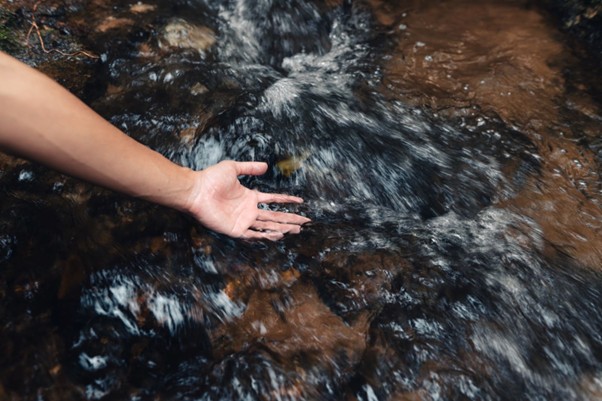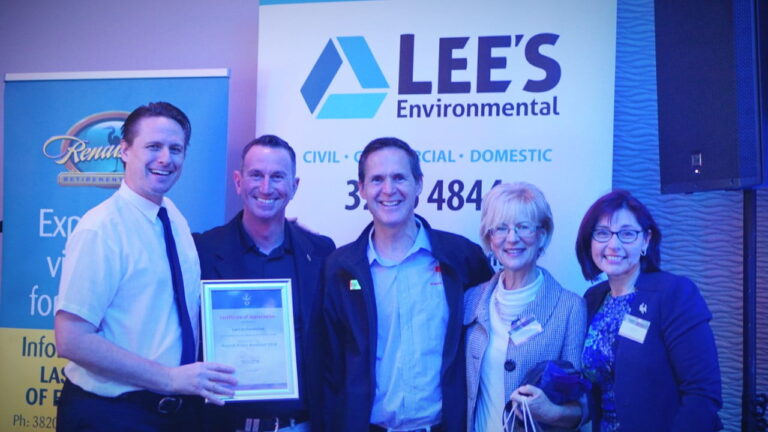Emergency spill kits are essential for anyone who handles liquids at work. You’ve probably seen fuel spill kits on a loading dock and chemical spill kits in a laboratory. Because there are so many types of kits available, most spill scenarios can be managed safely.
The main goal of every spill response kit is to prevent a leak from causing harm to people or the environment. Most kits include absorbent pads, booms, and socks that soak up spilled fluid and contain the area from spreading further.
At Lee’s Environmental, we are fully capable of managing hazardous materials that might be spilled. Our teams comes with the necessary safety gear and absorbent materials to ensure that spill control measures are put in place fast.
What Is an Emergency Spill Kit?
An emergency spill kit provides workers with the tools they need to respond to a spill immediately. As hazards vary, these kits come in many varieties, each tailored to a specific liquid. Even the safest-looking fluid can create a mess, so having a kit nearby offers peace of mind.
A typical kit includes everything from gloves and goggles to disposal bags and drain covers. Its step-by-step, colour-coded layout indicates what to grab first, second, and so on. Oil-only kits, chemical kits, and marine kits all differ in details, but they share one clear purpose: clean up the spill, protect the workers, and keep the environment safe.
Most spill kits come packed with personal protective equipment, strong refuse bags, absorbent pads, and other items needed to clean up hazardous messes. Kits also come in different sizes – a handheld pouch for a tipped lab bottle is much smaller than what would be needed for a wrecked tanker.
When Are Spill Kits Used?
You use a spill kit the moment a hazard leaks or spills and you cannot leave it unattended. Which kit you choose depends on the mess.
Case 1: Marine spill kits
Many crews first think of oil when they hear the word spill, as nothing spreads faster across open water. When crude oil or fuels are released into the ocean, the two liquids combine like syrup on a pancake, turning once-clear waves thick and dark.
To reduce that coral-killing slick, trained response teams act quickly, encircling the stain with floating boom, soaking it up in the manner an absorbent towel cleans a kitchen spill, and skimming every drop they can before it sinks or drifts away.
Emergency spill gear for an oil leak at sea has a challenging job: it cannot merely mop up the oil, but must also prevent that oil from re-mixing with the water. Because of this, most marine spill kits include special booms and skimmers that work together to contain the slick and separate the two liquids.
Marine life adds another layer of urgency. Birds, fish, and other wildlife can suffer swiftly and severely when oil contaminates their environment. Cleaning responders attempt to mitigate the harm immediately, sometimes using chemicals that break the oil into smaller pieces so mechanical tools can complete the job.
Case 2: Fuel Oil Spill Cleanup
Vehicles also leak fuel, and the average highway spill resembles that offshore disaster, albeit on a smaller scale. Even a thin puddle of petrol under the engine can spread, ignite, and become a fire hazard long before a fire truck arrives.
Most roadside kits borrow concepts from marine packs – stretchable absorbent mats, neutralising granules, small foam nozzles, and clear disposal bags sized for windows. What sets them apart is a windshield card that informs the driver how to identify a leak by the colour of the stain, plus an emergency number that should be dialled before a towel touches the ground.
In conclusion, any spill, whether big, small, wet, or dry, has the potential to reach places we would prefer to keep clean. That is why every driver and every crew member needs to remember the most useful tool of all: a quick call to professional responders.
Case 3: Chemical Spills in a Laboratory
Chemical spills happen in labs more often than you might think. Even the most skilled scientists can slip, tip a bottle, or mix something that shouldn’t be mixed.
That is why almost every lab keeps an emergency spill kit stocked with absorbent pads, neutralising powders, and other quick-cleanup tools.
Good spill kits are never one-size-fits-all. They are matched to the specific chemicals a lab uses, from acids and solvents to biological materials, so technicians know how to contain each hazard.
Still, equipment alone will not stop an accident. Trained staff must be ready to suit up, assess the scene, and seal off the area until the mess is under control.
To keep everyone safe, any workplace that handles liquid chemicals should review its kit contents and practice drills, preferably with advice—or even on-site training—from a licensed waste firm.
Case 4: Radioactive Spill Control
Radioactive leaks are in a class by themselves, and the danger grows with even tiny amounts of exposure. Free-roaming isotopes may harm workers today and turn into stubborn waste that haunts a site for thousands of years.
Chernobyl still reminds us of that lesson. When engineers ignored early signals and outsiders arrived hours later, the accident released clouds of cesium that poisoned land for generations.
Modern protocols therefore demand controlled zones, sealed shields, and teams equipped with dosimeters so everyone knows how much radiation they are absorbing at every moment.
If contamination is suspected, labs first restrict access, map the spread with specialised sensors, and then choose either absorption gels or tar-like polymers to trap the source before it spreads further.
Finally, because each isotope behaves differently, cleanup must follow plans certified by nuclear safety boards and analysed in dose-recorded phases so no radiation slips through the cracks.
When something radioactive spills, the clock starts ticking. Trained professionals should be on the scene fast. A spill kit made just for this type of accident helps keep the leaked material from spreading and guides crews on how to clean the area.
Case 5: A Biological Waste Spill and other Dangerous Goods
A biological waste spill happens whenever any living material leaks beyond its container.
Because there are many kinds of biological waste—blood, cultures, or even pet waste—you can’t treat every incident the same way. The clean-up steps change based on what spilled.
Who Should Own an Emergency Spill Containment Kit?
Every lab, warehouse, and factory that handles liquid chemicals needs a spill kit and a plan to use it.
But anyone who touches potentially dangerous products, from cleaners to paint thinners, should keep one nearby too. Spill-response kits work wonders when reached in seconds, so having one on hand is better than hoping an accident never happens.
Must-Have Items for Your Emergency Spill Kit
Every spill kit varies because the contents depend on the type of material being cleaned up. Still, almost every basic kit includes the same core tools and supplies.
- Face Mask Keeps fumes and dust out of your lungs while you work.
- Protective Gloves Shield your hands from chemicals, sharp edges, and germs.
- Personal Protective Equipment Extra gear like goggles and lab coats may be added.
- Disposable Scrapers Flat blades let you lift spills off smooth surfaces easily.
- Disposable Shovels Small, light shovels help move larger piles of debris.
- Absorbent Powder Sprinkle powder on a liquid spill for quick absorption.
- Absorbent Pads Useful for soaking up spills on floors, benches, or desks.
- Absorbent Socks Place these along edges to stop leaks from spreading.
- Disposable Contaminated Waste Bags Strong bags keep used materials in one place.
- Alcohol Wipes Fast way to clean small tools and surfaces after a spill.
- Sealable Waste Containers of Various Sizes Tubs and drums hold medium to big messes.
- Emergency Contact Numbers List phone numbers for local cleanup crews or services.
If you plan to build a spill kit yourself, ask a waste-management expert for guidance tailored to your facility.
Closing thoughts
Interested in finding out more about emergency spill kits, or why your organisation should have an emergency spill plan in place? The team at Lee’s Environmental can provide dedicated and sound advice on how to proceed. Be sure to contact us for a call on how to best deal with hazardous liquid chemicals and emergency spill situations.









